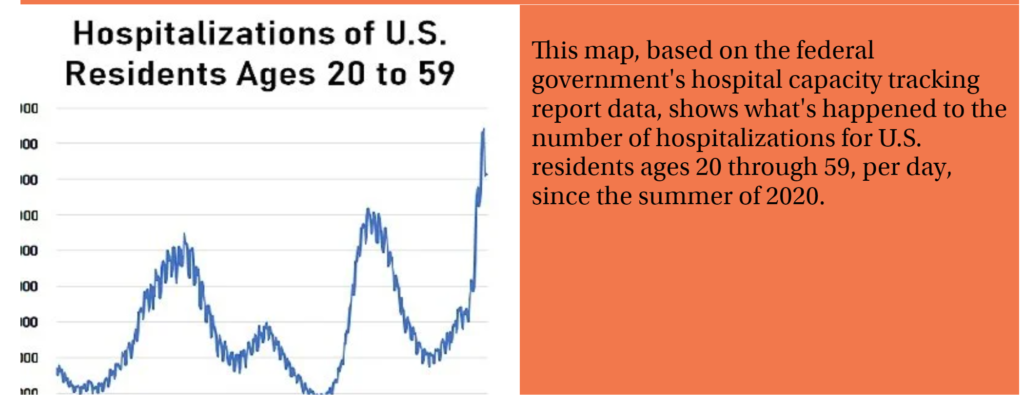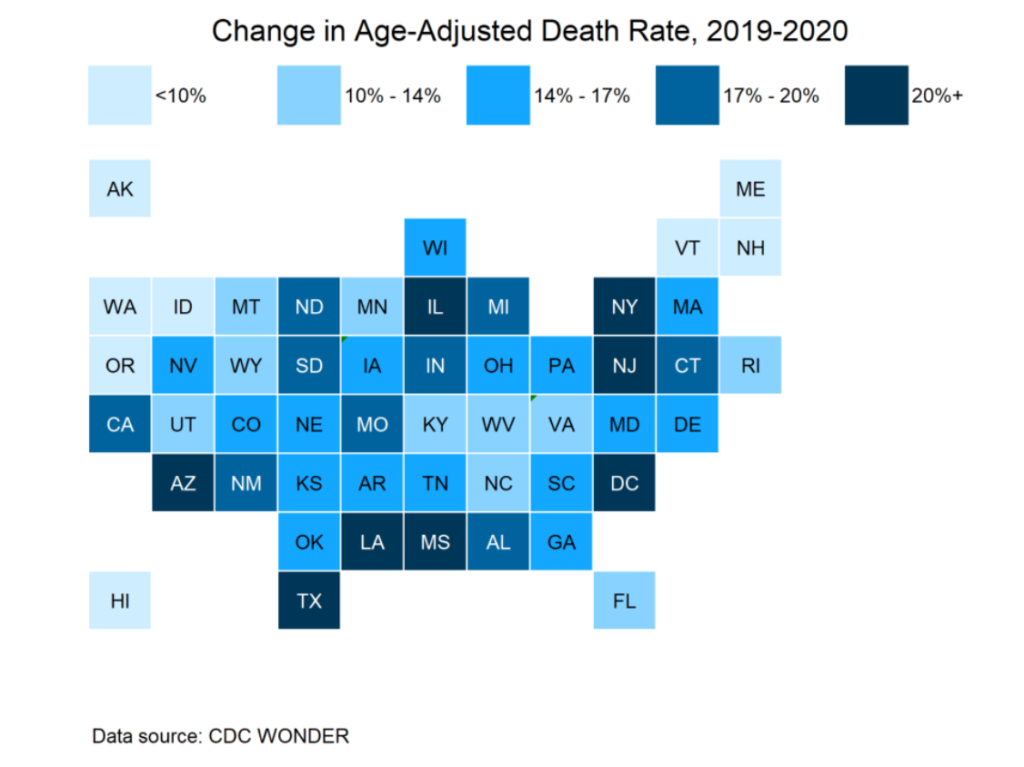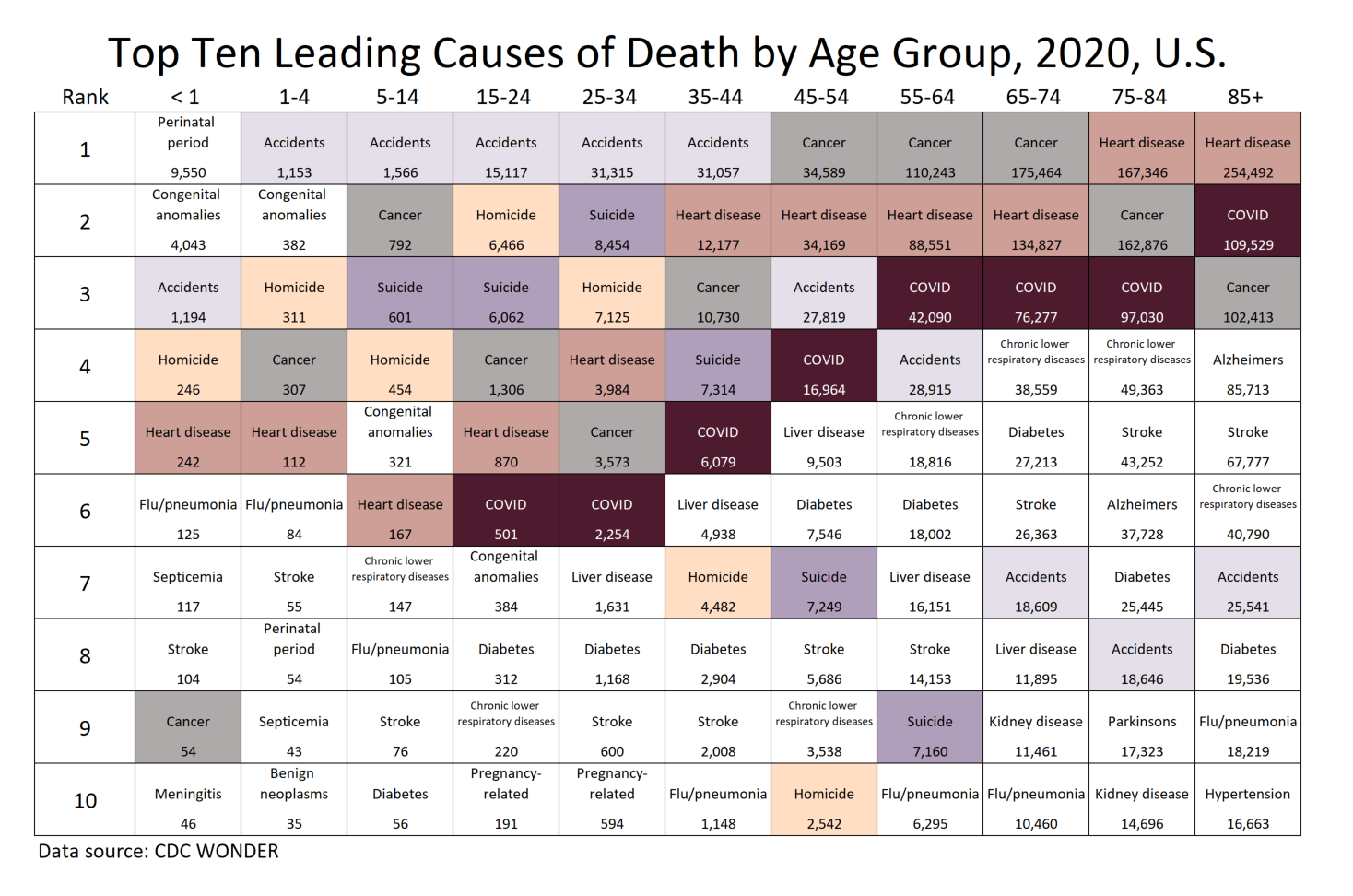Link:https://pmj.bmj.com/content/early/2021/04/28/postgradmedj-2021-140234
Excerpt:
Epidemiologists report there is no precise definition for what is or is not an epidemic wave. ‘Waves’ are a phenomenon of infections that can develop during a pandemic. A wave implies a rising number of sick patients, a characteristic peak of illness and then a dramatic or sustained decline of infections reaching a baseline.1 Previous experiences with the Spanish influenza pandemic (1918) and seasonal influenza epidemics suggest further waves of COVID-19 are inevitable.2 The UK has endured the first two waves of the COVID-19 pandemic with widespread socioeconomic consequences and mortality.3 The WHO regional office for Europe has recently reported that incidence, hospitalisations and deaths in Central Europe, the Balkans and the Baltic states are among the highest globally suggesting a third wave of COVID-19.4 The reason for this third wave in Europe and anticipated further waves in countries with vaccine roll-out including the UK could be due to the Peltzman effect.
The Peltzman effect is named after Sam Peltzman, professor of economics at the University of Chicago Booth School of Business. It describes the concept of ‘Risk Compensation’.5 In this concept, it is argued that highway safety regulations were not reducing highway deaths. ‘Risk compensation’ is a theory that suggests that people typically adjust their behaviour in response to perceived levels of risk. It postulates that people become more careful where they sense greater risk and lesser careful if they feel more protected. Peltzman theorised that though the introduction of safety devices, like seat belts or air bags, reduced the ratio of fatalities to accidents, the rate of accidents was found to have risen enough to offset the decreased fatality rate. He proposed that though people felt safer driving with a seat belt, it probably led to a phenomenon of driving with less attentiveness or higher speed causing an increased risk of run-off-road crashes or similar accidents.
…..
COVID-19 vaccination triggering Peltzman effect—An analysis of Peltzman effect reveals four main factors contributing to risk compensation, all of which appear to be present in the current COVID-19 pandemic. To initiate an increase in risky behaviour, a measurable benefit must be ‘visible’, a criterion that COVID-19 vaccines meet. This is supported by the decreasing number of infections in vaccinated populations.7 Risk compensation is more likely to occur if people have a ‘motivation’ to take on a risky behaviour and if it is within their ‘control’ to do so. With the COVID-19 pandemic these two factors seem to have manifested as ‘pandemic fatigue’ with decreasing adherence to risk reduction strategies of social distancing, face coverings and hand washing in the population. Such behaviours of risk compensation have raised concerns about threat to global public health efforts to control the pandemic.8 The final factor, the overall effectiveness of the intervention, in this case of the COVID-19 vaccine, is being increasingly recognised worldwide.9 This is highly desirable, increasing the likelihood of vaccine-acquired ‘herd immunity’. However, for the Peltzman effect, this high efficacy is likely to reduce adherence to other safety precautions. Vaccination drives in most European countries started in late December 2020, after which the rise of cases was seen. Thus, people’s complacency and a false sense of increased security after vaccination may have been the possible reasons for people to abandon protective and preventive behavioural strategies.
Author(s): Karthikeyan P Iyengar1, http://orcid.org/0000-0003-1701-4970Pranav Ish2, http://orcid.org/0000-0001-7998-2980Rajesh Botchu3, http://orcid.org/0000-0003-4164-7380Vijay Kumar Jain4, http://orcid.org/0000-0002-9577-9533Raju Vaishya5
Publication Date: April 2021
Publication Site: BMJ Journals





